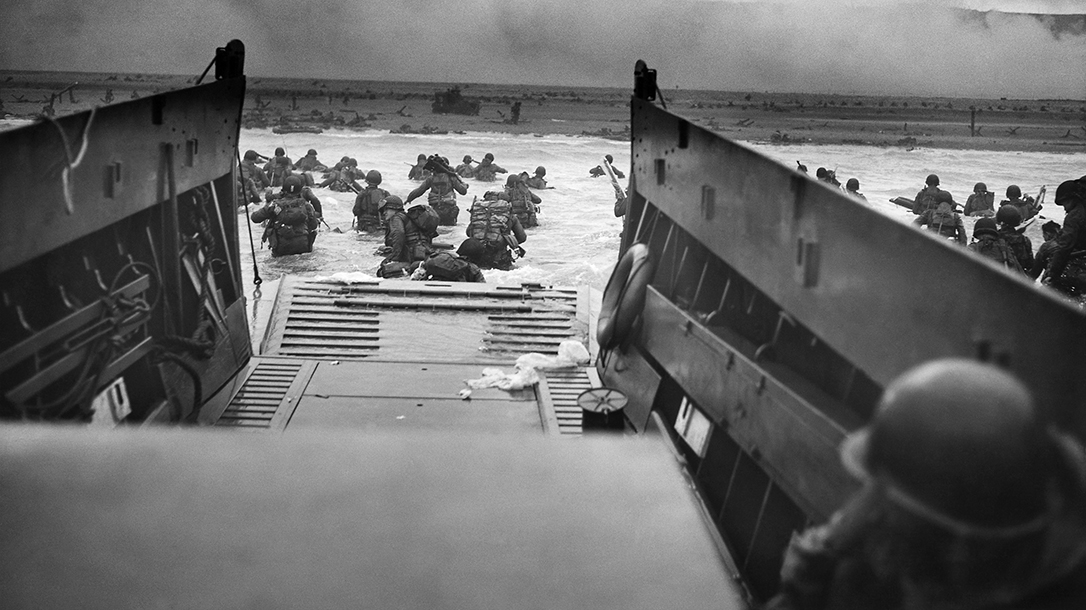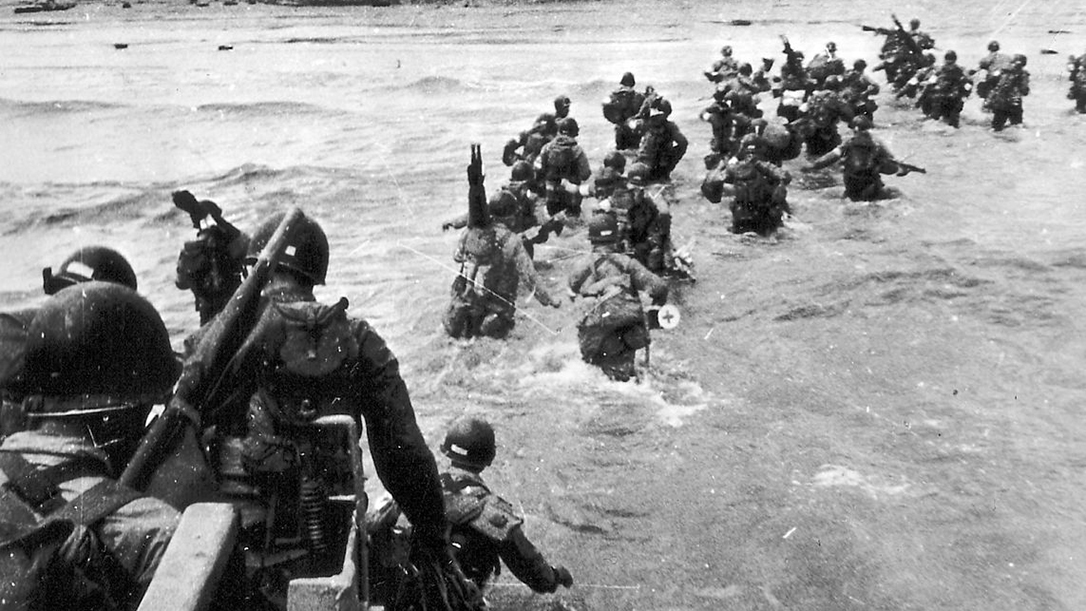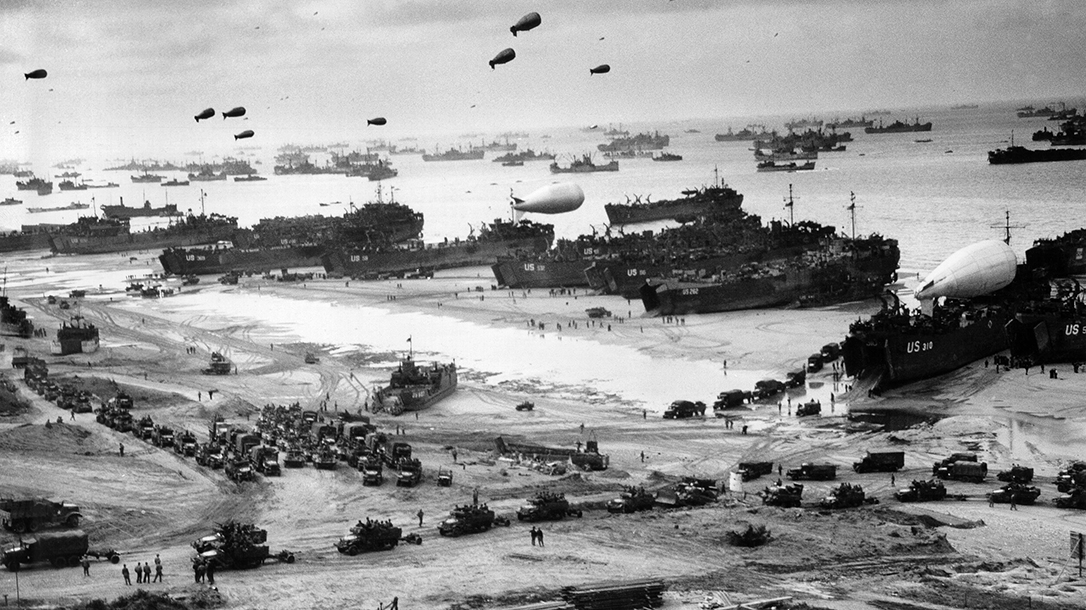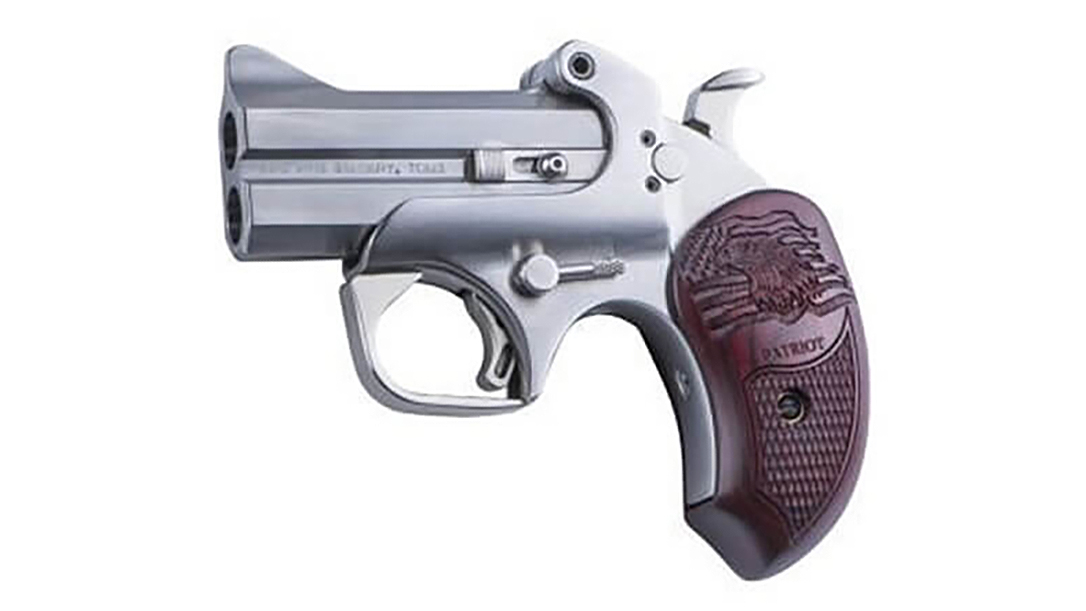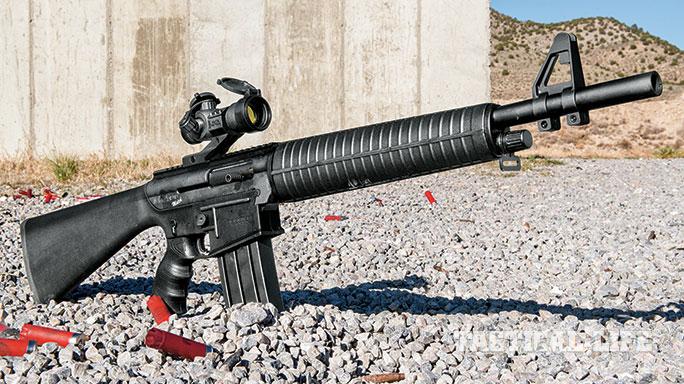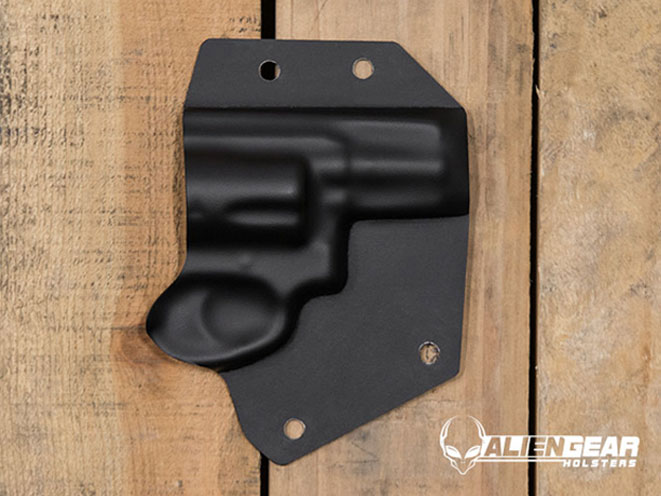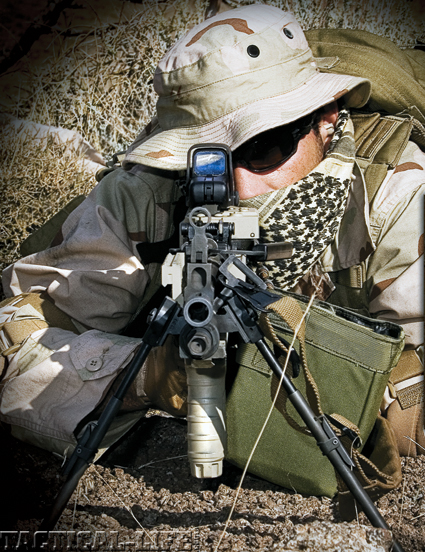In September of 2017, friends and I took a dream trip to visit the World War II battlefields of D-Day. June 6, 1944, marked the opening move of Operation Overlord. This was the Allied plan to invade France at Normandy and open a second front against Hitler in Western Europe. Had it failed, Hitler could have concentrated his forces against the Soviets on the Eastern Front, possibly winning the war. We had a lot of ground to cover, to say the least.
We made our base of operations at a small hotel in the coastal resort town of Arromanches-les-Bains in the British sector. From our balcony, we could see some of the barge-like, rectangular steel “Mulberries” still floating offshore. They formed a huge artificial harbor to move supplies to the invading forces until a storm destroyed them in late June of 1944. One washed up on the beach in town, and you can examine its rusting remains up close.
D-Day British Advances
Pegasus Bridge was our first objective. The 1962 Oscar-winning film The Longest Day made the British glider assault to capture the bridge over the Caen Canal at Bénouville a part of popular American culture. The movie did a good job of portraying the boldness of the attack led by Major John Howard of the 6th Airborne Division’s 2nd Battalion, Oxfordshire and Buckinghamshire Light Infantry. He and 181 men in six wooden Horsa gliders approached their dual objectives in utter silence in the first minutes after midnight on June 6.
Their D-Day mission was to capture and hold both the Bénouville Bridge and the bridge over the Orne River a few hundred yards farther east. This was critical for two reasons. First, it would block the advance of German reinforcements to the landing beaches. Second, the rest of the British 6th Airborne Division was dropping east of Caen on the far eastern flank of the invasion, and the bridges and road would be their main route of resupply.
Gliders Surprise
Major Howard’s glider landed first and closest, within 50 yards of the bridge, followed by two other moments later and not much farther away. One broke apart on landing, but you have to expect a few problems when you crash-land a 7-ton wooden plane with an 88-foot wingspan at 100 mph in the dead of night. The glider landing here is considered a masterpiece of precision flying. The Allies took the Germans by complete surprise. Howard’s men captured the bridge intact after 10 minutes of fighting. Bénouville was the first French village liberated, at the cost of two glider men killed.
The Café Gondrée on the bank of the canal was there during the battle, and you can still eat there today. The original bridge was renamed the Pegasus Bridge after the insignia of the 6th Airborne Division. It was replaced in 1994 with a modern version that closely resembles it. The real bridge is preserved at the excellent Pegasus Memorial Museum along with many original artifacts of the 6th Airborne Division, its battles and a full-sized reproduction of a Horsa glider.
Coastal Batteries
The Atlantic Wall defenses the Allies smacked up against on D-Day were about 2,500 miles long and as sophisticated as Field Marshal Irwin Rommel and 17 million cubic yards of concrete could make them. Seeing these fortifications puts the magnitude of the challenge facing the Allied seaborne invaders in perspective.
We visited the Le Grand Bunker and Atlantic Wall Museum in Ouistreham, just east of Sword Beach. This tall, 52-foot concrete observation post watched over 25 miles of the English Channel, ready to calculate ranges and direct artillery fire on invaders. Well preserved and interpreted, it’s full of realistic dioramas using real uniforms and artifacts showing how the garrison lived and worked inside. A direct hit from a 7.5-inch shell from the heavy cruiser HMS Frobisher destroyed the rangefinder, but the 53 soldiers inside weren’t forced out until three days after the city’s capture, when four British solders blasted open the steel door.
Displayed outside is a genuine British-built LCM, or Landing Craft Mechanized. LCMs were among the smaller landing craft used on D-Day. This one didn’t participate in the invasion. But it is the real deal and was used in the film Saving Private Ryan.
D-Day German Batteries
About 22 miles west along the shoreline at Longues-sur-Mer, we visited one of the best-preserved German coastal batteries. It’s stripped bare compared to Le Grand Bunker, but somehow its heavy guns escaped scrapping after the war. On a treeless clifftop overlooking the Channel sit four long-barreled 15cm (5.9-inch) naval guns mounted in bombproof concrete casements with roofs 6.5 feet thick. With a range of 12.4 miles, they could fire on Allied ships and the Omaha and Gold invasion beaches. They had to be neutralized.
Allied planes pounded them with more than 2,000 bombs, but on D-Day morning, the German guns opened fire on targets on both land and sea. Finally, the British cruisers HMS Ajax and Argonaut took them on, firing thirty-six 6-inch shells and twenty-nine 5.25-inch shells. By 8:45 a.m., the German guns were permanently out of action.
Walking in the ruins of the battery, you can see the damage caused by the British naval gunfire. One gun was blasted right out the front of its casement when a round entered the opening, penetrated an interior concrete wall and exploded in the magazine. Other guns show signs of direct hits that surely killed everyone in the casement. Impressive as they are, the Atlantic Wall defenses were comparatively thin in Normandy because the Germans believed it was the least likely spot for a seaborne invasion.
Omaha Beach
The American beach assault fell on the westernmost landing sector. Crescent-shaped, 5 miles long and backed by sloping bluffs up to 170 feet high, Omaha Beach was our next destination. Operation Neptune, the naval aspect of the attack, was the biggest seaborne invasion in history.
I felt the most powerful emotional connection on Omaha Beach. Most of the U.S. Army’s 3,700 casualties (killed, wounded and missing) fell here. It was the costliest sector of the beachhead. Despite years of planning, weather and sea conditions threw the operation into confusion at the outset, blowing landing craft off course and scattering the units. Where the landing craft beached determined the fate of the assault troops.
The first wave of infantry proved surprisingly light—about 1,450 soldiers spread along a front 8,700 yards wide. The Germans saw them coming and concentrated their fire with devastating effect. The fire was deadliest in front of the American objectives: the roads leading up through draws in the high bluffs. They perceived, as did the Germans, that these draws were the only way to move tanks and wheeled vehicles off the beachhead. The Germans used most of their limited resources defending the draws, leaving the spaces between them protected mostly by barbed wire and mines.
D-Day Fire
The troops landing near the draws took a maelstrom of fire, while those landing away from them took much less. The Americans didn’t seize the draws as planned, but won anyway, and it had nothing to do with generalship or planning. The men on the beach won the battle. They did the only sensible thing to do, namely fight their way straight up the sides of the more lightly defended bluffs.
We visited the Easy Red and Fox Green sectors of Omaha Beach. The first 15 landing craft on Fox Green dropped their ramps in the water 50 to 100 yards from the sand. About half of the 480 soldiers they carried were killed or wounded by machine gun and mortar fire as they struggled through the deep water toward the surf and the 200 yards of open beach exposed by the tide. The beach ended at a sloping wall of loose shingle (palm-sized stones) that offered some cover from enemy fire from the bluffs beyond. Many soldiers, exhausted and terrified, chose to lie in the surf and crawl in with the tide. Robert Capa captured his famous D-Day photographs here during the first 90 minutes of the battle. It was a disaster that left the scattered survivors disorganized and largely useless as an attacking force.
Lucky Landings
By contrast, enemy fire just to the west on Easy Red was light, and the few units that mistakenly landed there got ashore with low casualties. Less than 90 minutes after the first troops hit the beach, these lucky and intrepid soldiers had used Bangalore torpedoes to blast through belts of barbed wire protecting the bottom of the bluffs, probed their way across the minefields and found a small draw just deep enough to protect them from flanking fire as they climbed the bluff. You can see this exact draw today at the point where it reaches the top of the bluff. It’s a scenic lookout at the American military cemetery there.
Behind Enemy Lines
By late morning, though the generals and admirals didn’t know it, the Americans were behind enemy lines on the bluffs, and the tide was turning. Walking the German defenses today, you can see evidence of tank and naval gunfire on the concrete gun casements and bunkers. Trapped between the ocean and the shingle wall, the few tanks that did make it ashore were sitting ducks for enemy guns, but some of them clearly got their licks in. Most German defenders fought from open trenches and pits, which you can still see in outline. One is immediately struck by the long distance between the defenders and the landing troops. I estimated that the closer positions halfway up the bluffs were 450 yards or more from the landing craft if they were firing directly at them.
Accounts of the battle indicate there was a lot of deadly fire across the length of the beach. Additionally, the position of the concrete casements supports this. The close engagement ranges in the landing scenes from Saving Private Ryan just aren’t accurate. To German gunners, the American soldiers were small targets. As smoke spread across the battlefield from fires and explosions, it’s likely many were just shooting blindly across the beach. This is one of the reasons the following assault waves had fewer casualties.
Pointe Du Hoc
While heavy enemy resistance, high casualties, landing errors and confusion prevented most assault troops on Omaha Beach from carrying out their original missions as planned, that wasn’t the case of the 2nd Ranger Battalion attack on Pointe du Hoc. At the far west flank of the beachhead, on a plateau faced by sheer cliffs up to 100 feet high on all sides, the Germans had a powerful battery of six 155mm (6.1-inch) guns capable of shelling Omaha and Utah Beaches. The Allies knew those guns had to go.
You can’t look at the cliffs of Pointe du Hoc and not be startled by the crazy bravery it must have entailed to even consider the idea of scaling it with ropes and ladders under enemy fire. Heavy air and naval bombardment before, and the direct fire from the destroyer USS Satterlee during the climb, helped the Rangers make it to the top. The shelling turned the plateau into a cratered moonscape, and that’s how it looks to this day. Many of the craters are more than 10 feet deep. It’s also easy to lose your friends when you try to walk across the area. The same thing happened to the Rangers.
As it turns out, the guns in the concrete positions on the point were fake. The Germans actually cleverly moved and concealed the guns a few hundred yards to the rear, in the woods, ready to fire on Utah Beach. The Rangers boldly pressed forward, located and destroyed them, completing their mission. Then they fought like mad to beat back German counterattacks until relieved on June 8. By then, only 90 of the 225 Rangers who climbed up remained fit to fight.
Still Grateful
The last stop of our D-Day tour was the excellent Sainte-Mère-Église Airborne Museum in that town. It has both a genuine American C-47 cargo plane and an ultra-rare Waco glider. The 82nd Airborne’s 505th Parachute Infantry Regiment received the mission of capturing the town because it was an important access point for Utah Beach. But during the drop, some buildings in the town were on fire, illuminating the paratroopers. This resulted in heavy casualties. The enemy shot many men who still hung on their parachutes.
One paratrooper, John Steele, whose parachute snagged on the church’s bell tower, survived by playing dead. Today, a realistic paratrooper figure hangs there in recognition of the high price paid to liberate the town. This is no small thing in a time when anti-American sentiment seems to be everywhere in the world. But that certainly isn’t the case in the small French towns and villages near the Normandy coast.
This article is from the June-July 2019 issue of Ballistic magazine. Grab your copy at OutdoorGroupStore.com. For digital editions, visit Amazon.








